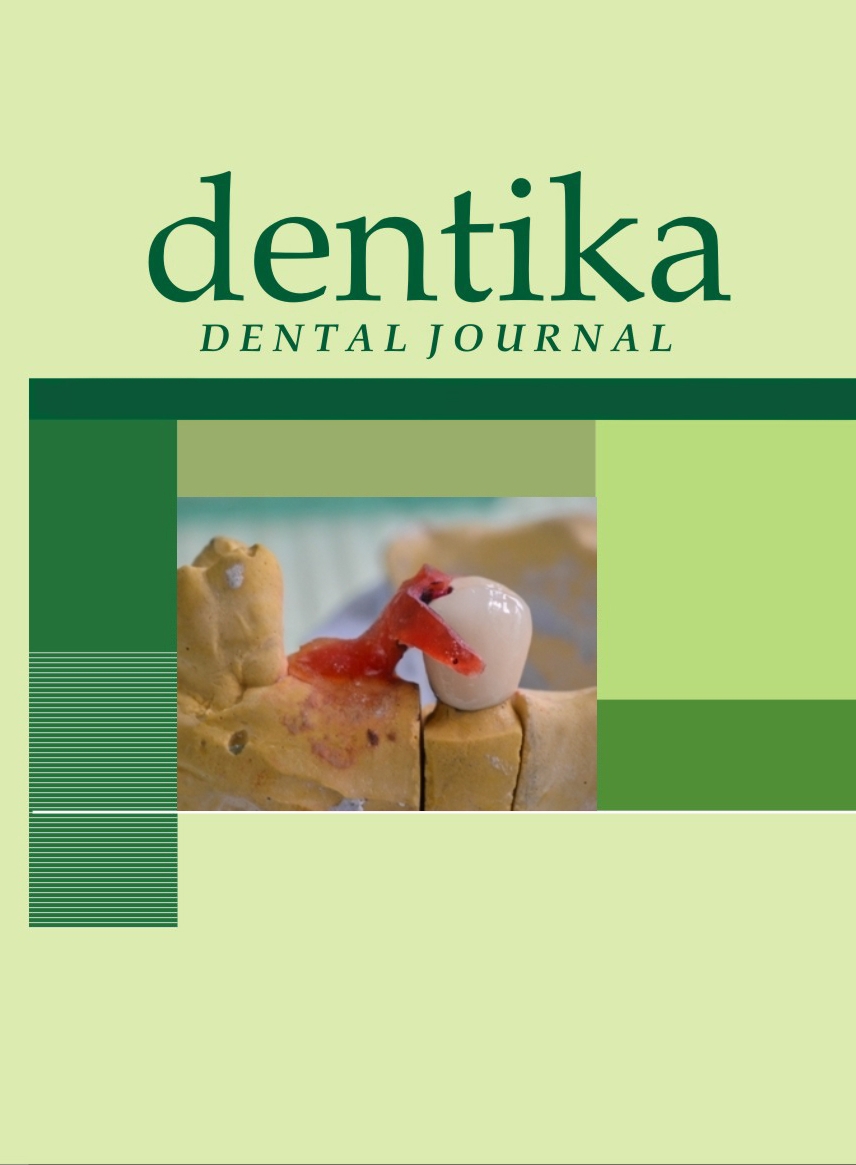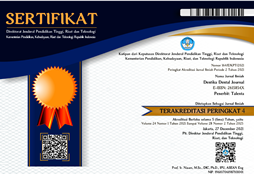Application of Cameriere Method for Age Determination in the Deutero-Malay Population
Akurasi Metode Cameriere untuk Estimasi Usia pada Populasi Ras Deutero Melayu di Indonesia
DOI:
https://doi.org/10.32734/dentika.v25i1.7368Keywords:
cameriere method, age determination, mixed dentition, Deutero-Malay populationAbstract
Cameriere introduced a method for determining human age based on the length and width of the open apex from seven permanent left mandibular teeth on a panoramic radiograph. Therefore, this study aims to produce a formula for age determination using Cameriere’s method on panoramic radiographs in the Deutero-Malay subrace population. It was conducted using an analytical design on seven left permanent mandibular teeth from 240 panoramic radiographs with predetermined inclusion and exclusion criteria. The tooth length was measured from the incisal edge/cusp to the tip of the apex (L1-7), then the width of the open apex was measured (A1-7) in millimeters (mm) using open-source Fiji ImageJ. Furthermore, the value of  was obtained by dividing the width of the open apex (A1-7) and tooth length (L1-7), while s was obtained from the sum of  to . N0 is tooth with an apex tip that had closed perfectly. Data were collected and tabulated by gender (g) while the analysis was performed using a linear regression test with IBM statistical software, also, observer reliability was evaluated to determine the variability. The results showed a strong correlation between chronological age and Cameriere’s method variables g, , N0, s, and s*N0 (R=0.899) with the formula AGE = 10,845 + 0,140.g + 1,421.  + 0,297.N0 – 1,284.s – 0,10.s*N0, R2=0.807 and SEE=0.756. Based on the results, Cameriere’s method can be used for age determination in the Deutero-Malay subrace population with panoramic radiographs.
Downloads


















